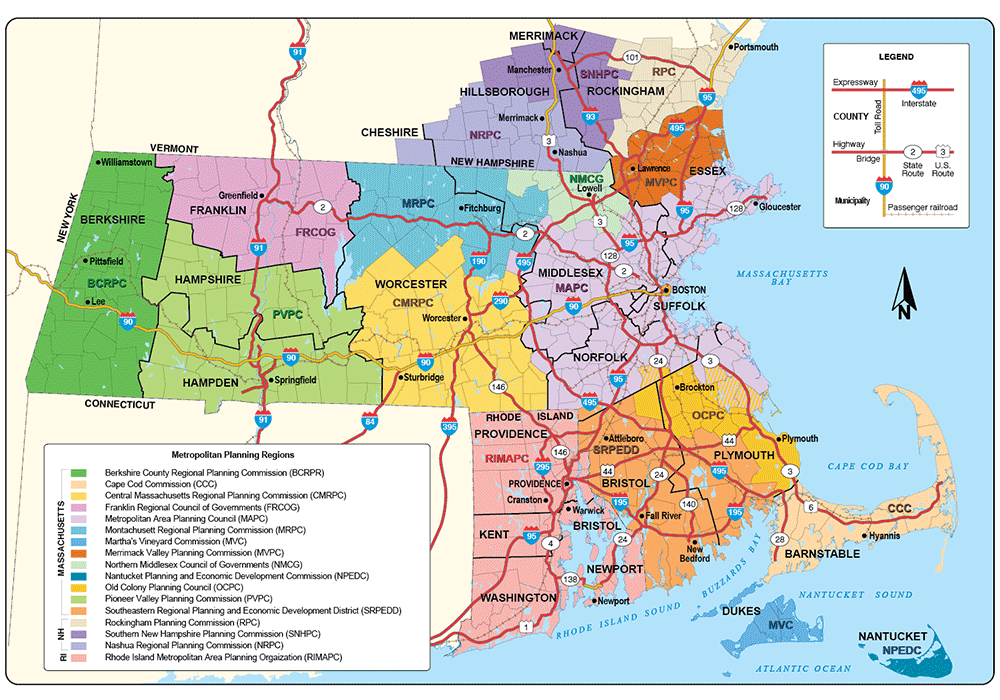Home » Our Work

The Boston Region MPO staff have maintained a travel demand model for the Boston region for over four decades. Transportation and land use planners use travel demand models to quantify demand for our transportation network, now and in the future, and assess the impacts of alternative projects, policies, and programs to guide long-range planning. Travel demand models are purpose-built tools and require contextual knowledge and application experience to be used correctly.
The newest regional travel demand model is TDM23, built to support Destination 2050, the Boston Region MPO's current Long-Range Transportation Plan. Some key features of TDM23 that differ from previous versions of the model include the representation of rideshare services, work-from-home behavior, and the ability to conduct sensitivity testing and exploratory analysis. For more detailed documentation and guidance, please visit the TDM23 User Guide webpage.
Current Applications
Destination 2050
TDM23 was developed to support analysis of the planning scenarios in the Boston Region’s Long-Range Transportation Plan, Destination 2050. The results of the analysis include projections related to congestion, greenhouse gas emissions, and disparate impacts on equity populations.
Allston Multimodal Project
The Allston Multimodal Project will significantly improve Interstate 90 and its abutting interchange and create a new stop on the Worcester/Framingham commuter line. MPO staff are utilizing TDM23 to help project stakeholders understand the transportation impacts and opportunities of the project by producing forecast data on highway volumes, transit volumes, and mode splits in the study area.
Resources
- TDM23 User Guide: An overview of the model, a guide for installation, and links to additional resources such as data dictionaries, video tutorials, and the published version of the Structures and Performance Report, which outlines all model components, parameters, and scenarios and describes how the model performs compared to observed data
- TDM23 Unveiled: Shaping the Future of Modeling: A 50-minute webinar hosted by staff of the Boston Region MPO in November 2023
- MAPC Regional Projections and Methodology: Population, household, and employment projections generated to support regional transportation modeling, project planning, and design
- TF Resource: A collection of best practices for travel demand forecasting and travel survey methods
Request Access to TDM23
TDM23 was built to be shared with the travel demand modeling community and is publicly available. To request access to the model inputs and scripts for the current version (TDM23.2.0), please contact model.support@ctps.org with information about your organization and intended use.
Contact
Marty Milkovits, Director of Modeling and Analytics
Sabiheh Faghih, Program Manager
model.support@ctps.org
